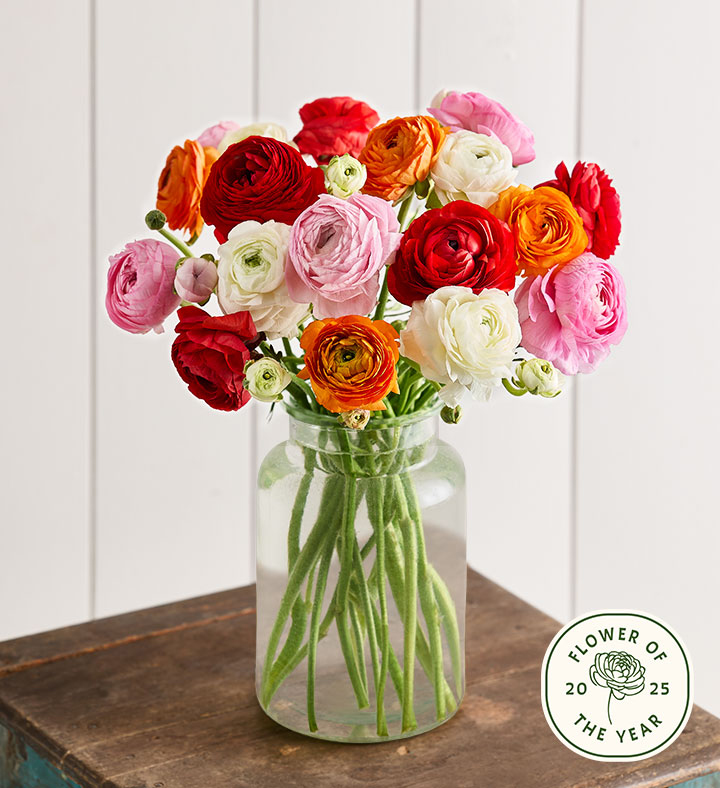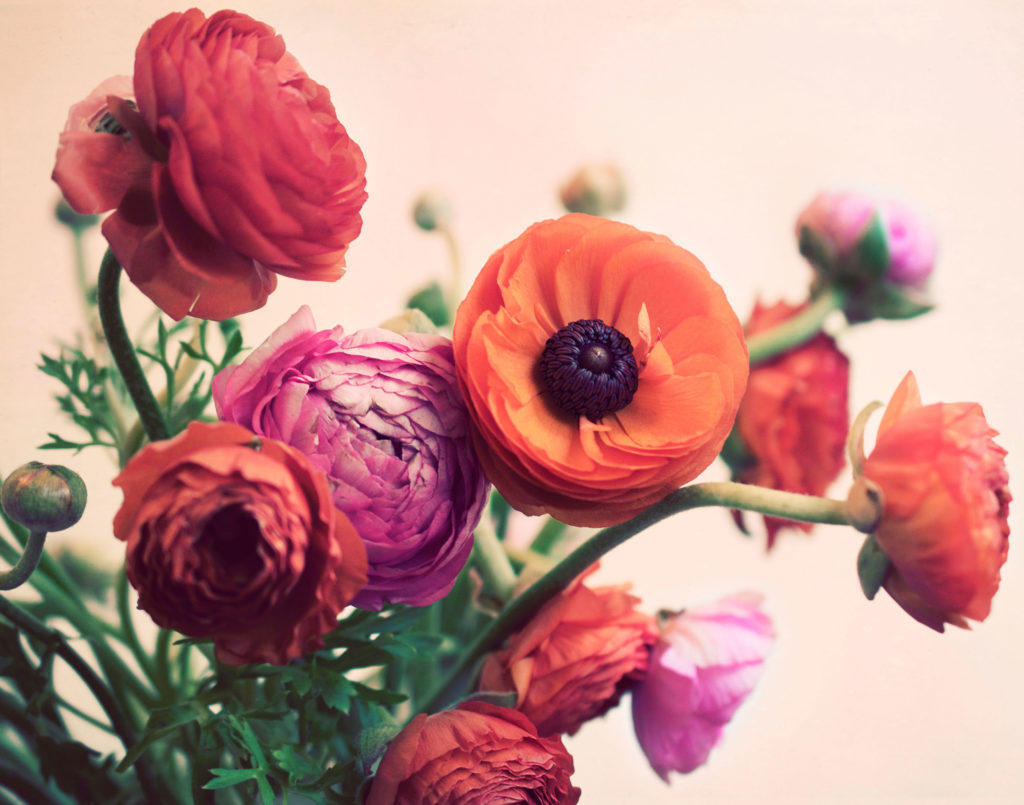
The 2025 Flower of the Year Is Set to Overtake the Peony in Popularity
And use our step-by-step growing guide to include it in your garden.

Step aside, peonies—2025 belongs to ranunculus, crowned as the Flower of the Year by 1-800-Flowers. With their dazzling palette of jewel tones and romantic, layered petals, these beautiful blooms are going to become the “it flower” to grow in your garden. But it’s not just their garden-grown beauty making waves: Ranunculus are trending for long vase life, versatility in garden styles, and pollinator-friendly benefits. Ready to jump on the trend? Let’s explore how to start planting and what hybrids to grow for bountiful blooms this spring.

Courtesy of 1-800-Flowers
Planting Secrets and Regional Timelines
To get a head start on growth, try pre-sprouting your corms by soaking them for a few hours until plump, then nestle them in damp soil or a tray of moist vermiculite for 7–10 days in a cool, dark spot. This jumpstarts growth and gives you a head start on the season. For a super-powered boost, try adding a little fertilizer tea made from worm castings to supercharge growth.
When planting, ranunculus thrives in well-draining soil enriched with organic matter like compost or aged manure, ensuring roots have the nutrients they need to flourish. For a surprising twist, try companion planting with pest-repelling herbs like lavender or rosemary, which not only deter pests but also enhance the garden’s fragrance and aesthetics. For best results tailor your planting timeline to your particular region listed below:
Southwest
Ideal Timing: Late Fall to Early Winter (October to December)
Why: The Southwest’s mild winters provide the perfect conditions for ranunculus corms to establish. Planting in late fall ensures blooms in early spring.
Tips: Pre-soak corms for 4–6 hours before planting to help them hydrate. Plant in well-drained soil with full sun exposure.
Pacific Northwest
Ideal Timing: Early Spring (March to April)
Why: Cool and wet winters in the Pacific Northwest can cause corms to rot if planted too early. Waiting until early spring minimizes this risk and ensures good growth.
Tips: Ensure soil has warmed slightly to about 50°F. Use raised beds or well-drained areas to avoid waterlogging.
Intermountain West
Ideal Timing: Late Winter to Early Spring (February to March)
Why: While winters can be harsh, planting when the frost risk diminishes allows corms to thrive before summer heat.
Additional Tips: Start corms indoors in trays or pots if ground conditions remain frozen until late spring.
California
Ideal Timing: Late Fall to Early Winter (November to December)
Why: Coastal areas provide mild winters ideal for fall planting, resulting in robust spring blooms.
Additional Tips: Choose sheltered areas for planting to protect corms from heavy rainfall. Cover beds with mulch if there’s a frost risk.
High Deserts
Ideal Timing: Early Spring (March to April)
Why: High desert regions experience temperature extremes, so planting after frost ensures steady growth.
Additional Tips: Protect young plants with row covers to prevent damage from unexpected frosts or temperature swings.

Lisa Sieczka/Getty Images
Growing Tips
To ensure vibrant blooms, deep but infrequent watering is key—this strengthens roots and prevents rot. In arid regions, add a layer of organic mulch to retain moisture and stabilize soil temperature. Fertilize every two to three weeks with a low-nitrogen, phosphorus-rich option to encourage flower production over foliage. For continuous color, try succession planting, staggering your corms every few weeks, especially in warmer climates.
Harvesting Hacks for Longer Vase Life
Harvest ranunculus blooms at the perfect moment—when their buds feel soft, some even say “like marshmallows,” but they haven’t fully opened, to ensure longer-lasting flowers. For cutting, use sharp shears to trim stems at an angle, which helps them absorb water more efficiently. Keep vase water fresh by changing it daily, and place arrangements away from direct sunlight to extend their beauty. In colder climates, store corms after the growing season by cleaning and drying them thoroughly before placing them in a cool, dark, and breathable container.

Barbara Rich/Getty Images
Must-Try Ranunculus Cultivars for 2025
The 2025 Flower of the Year brings a dazzling lineup of cultivars tailored to specific regions. From bold hues to delicate pastels, these varieties thrive in diverse climates and add elegance to any garden. Here are a few standout choices to inspire your next planting season:
- Giant Tecolote: Known for large, vibrant blooms, perfect for California coastal regions.
- Elegance Pastel Mix: Thrives in mild climates like the Pacific Northwest.
- Cloni Pon-Pon: Unique textures and colors, ideal for high-desert areas in the Intermountain West.
- La Belle Champagne: A romantic blush-pink variety that’s drought-tolerant and performs well in Mediterranean climates like Southern California.
- Amandine White: A robust cultivar that thrives in cooler climates such as the Pacific Northwest and higher elevations.
- Picotee Café: Stunning with its ombre-edged petals, it’s a favorite for gardeners in temperate areas like Northern California and Oregon.
We only recommend things we love. If you buy something through our site, we might earn a commission.
